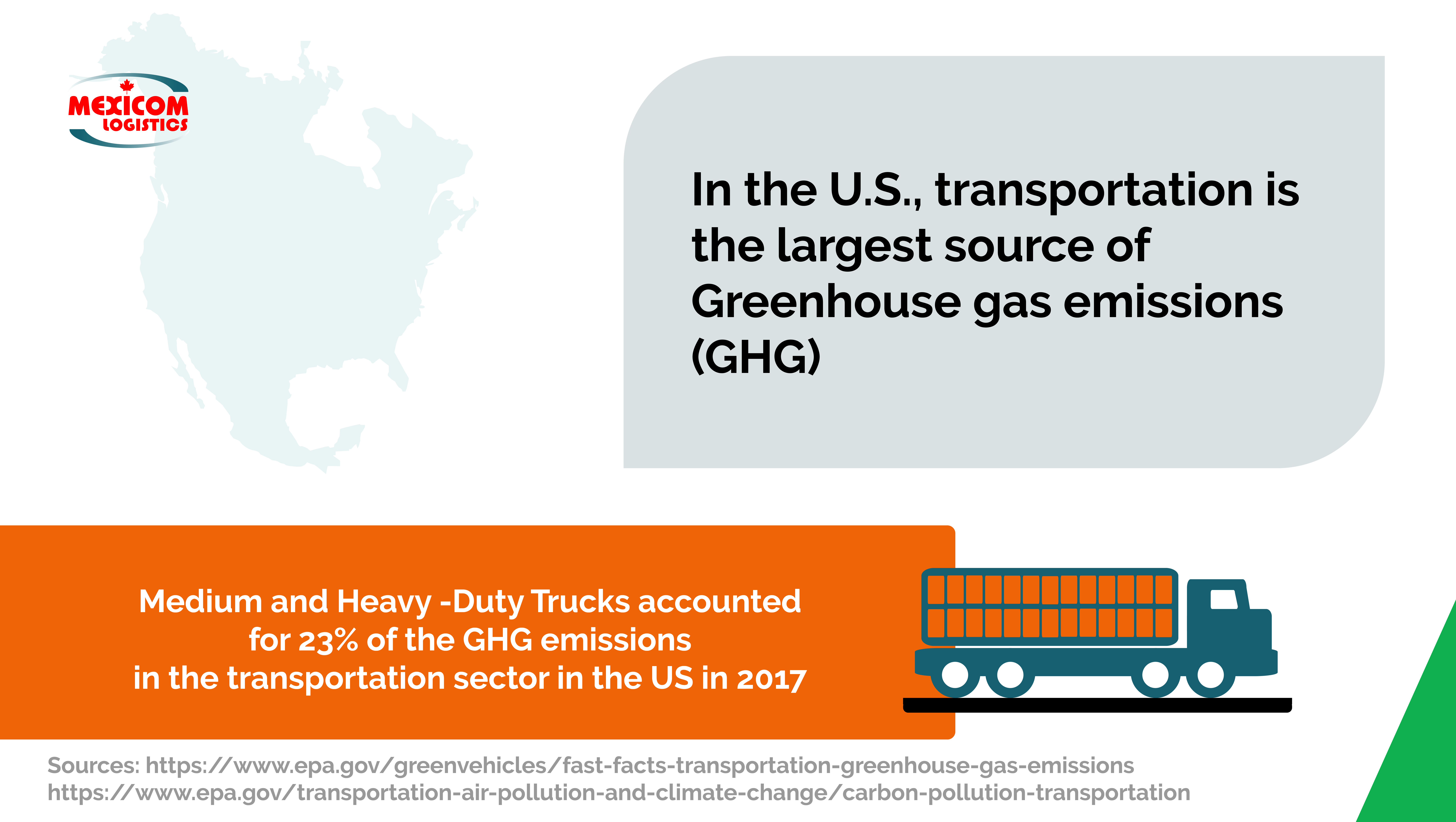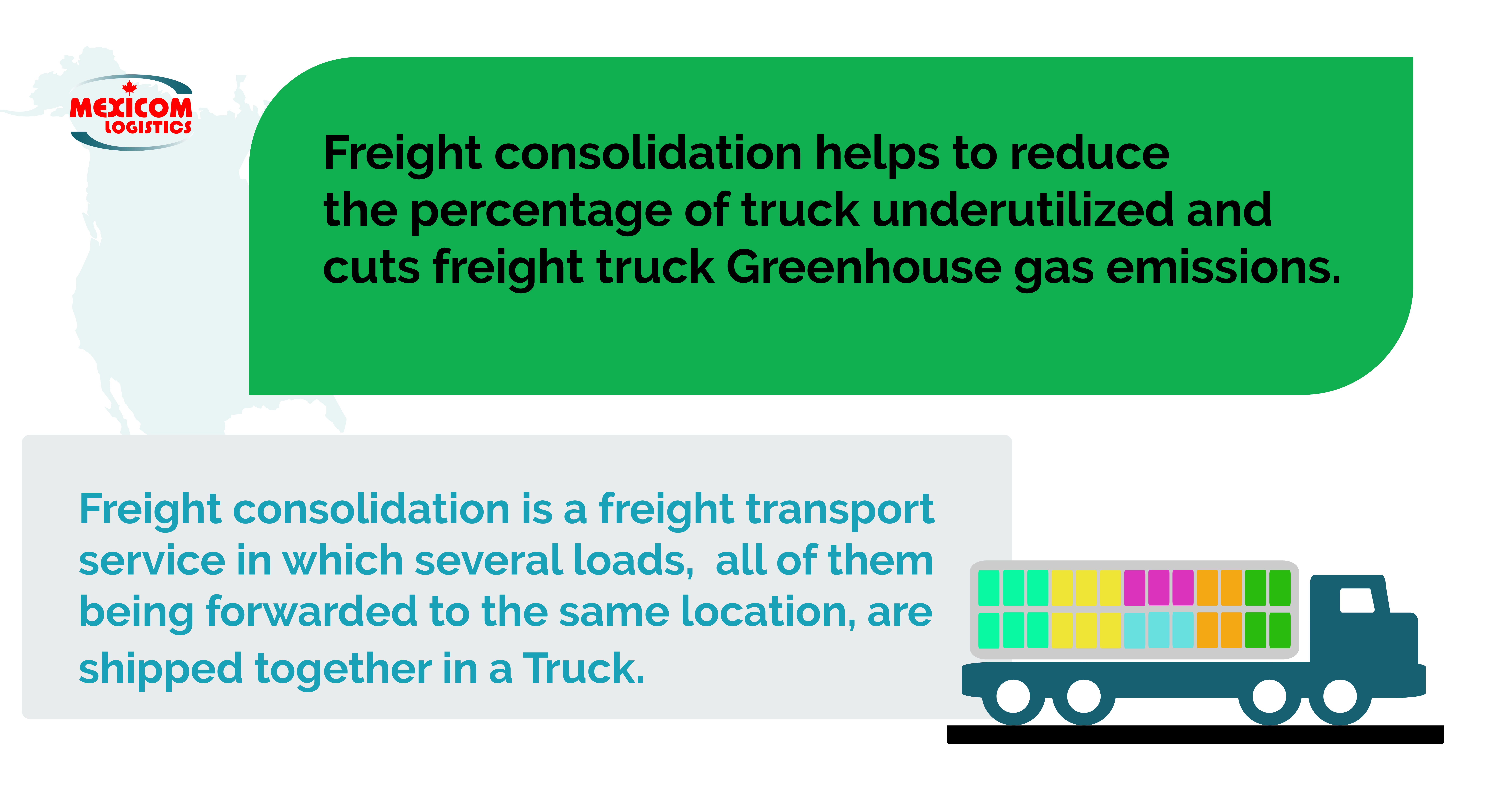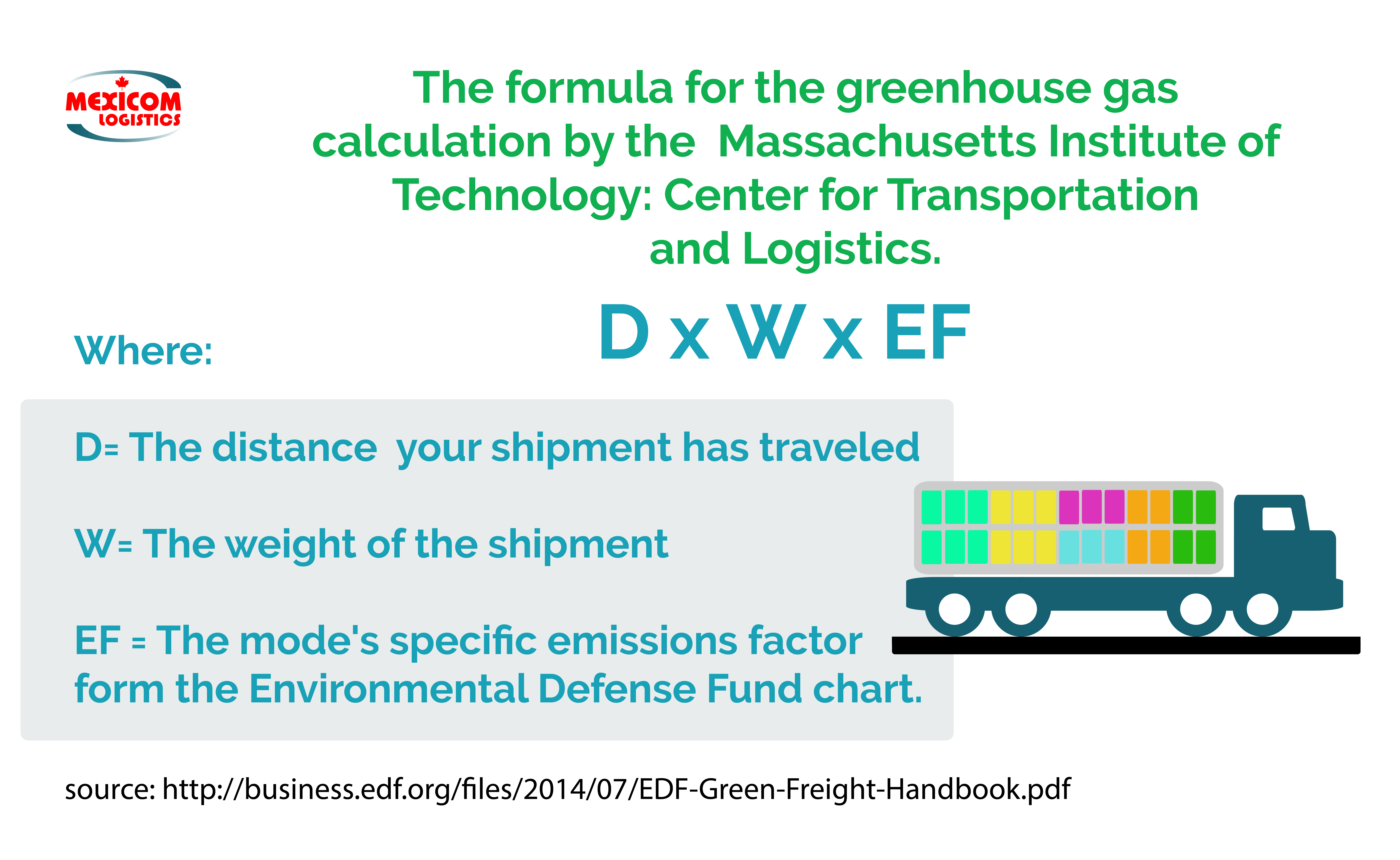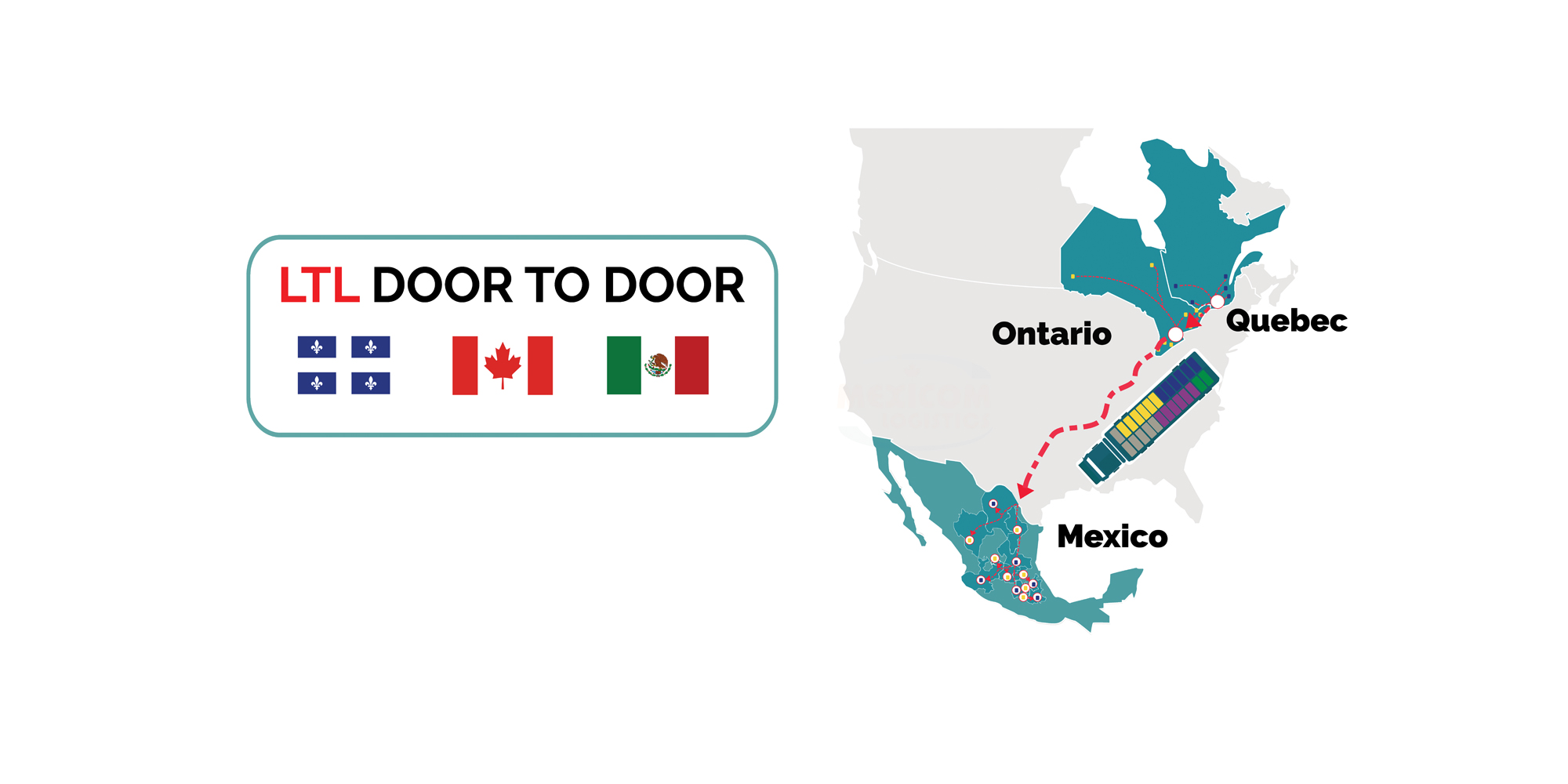Action on climate change: Freight consolidation to reduce the amount of CO2 emissions
In this post, we start by making a review of the importance of taking action on climate change. We continue by presenting data that helps to understand the impact that the transportation sector in North America, and particularly freight transportation, has on climate change. Finally, we explain one of the strategies that can be applied in the freight transportation sector to help cutting greenhouse gas emissions to the atmosphere: Freight consolidation.
Real action on climate change is imperative
Real action on climate change is crucial. “The UN estimates that the world would need to increase its efforts between three- and five-fold to contain climate change to the levels dictated by science – a 1.5°C rise at most – and avoid escalating climate damage already taking place around the world.”
According to United Nations Secretary-General António Guterres, “The best science, according to the Intergovernmental Panel on Climate Change, tells us that any temperature rise above 1.5 degrees will lead to major and irreversible damage to the ecosystems that support us”. In fact, “Science tells us that on our current path, we face at least 3-degrees Celsius of global heating by the end of the century. ”.
North America occupies first place in the world ranking, although with a negative note: 20.8 tons of CO₂ emissions per capita in 2019, the region formed by the US and Canada is the one that contributes the most to the change climate with its inhabitants on a personal level by a wide margin.
Environmental impact of freight transport
Increase in concentrations of greenhouse gases (GHGs) in the atmosphere causes the Earth’s atmosphere to warm, which results in climate change. Examples of greenhouse gases are methane, nitrous oxide, hydrofluorocarbons, and carbon dioxide. Cars and Trucks burn fossil fuels like gasoline and diesel, releasing carbon dioxide, a greenhouse gas, into the atmosphere.
Land transportation accounts for 62% of emissions. In terms of road freight, it is a rapidly growing sector, partly due to the rise of e-commerce and home delivery. And it is the most difficult transportation segment to decarbonize, since the use of clean energy is much less developed than in people transportation. That is why more and more companies seek to reduce their carbon footprint through sustainable and efficient transportation practices
Greenhouse gases emissions from transportation in Canada, the US, and Mexico
Greenhouse gases emissions from transportation in the United States
- CO2 emissions in 2021 have been 4,752,079 megatons, making the United States the second country for CO2 emissions in 2021
- Greenhouse gas emissions increased slightly from the previous year in 2022, by 1.3%, keeping the US 15.5% below 2005 levels and off track to meet its global promise of reduce emissions by 50% to 52% by 2030, according to estimates released Tuesday by analysis group Rhodium.
- In that country, transportation is the largest source of GHG emissions. In fact, it accounts for approximately 29% of total US GHG emissions.
- Heavy-duty and medium-duty trucks accounted for 23% of GHG emissions in the US transportation sector in 2017

Greenhouse gases emissions from transportation in Canada
- CO2 emissions in 2021 have been 563,538 megatons
- Per capita CO2 emissions in Canada have increased in 2021, when they were 14.86 tons per inhabitant.
- In 2021, Canada emitted approximately 546 million metric tons of CO2. This represented an increase of almost 11 million metric tons compared to emissions recorded during the previous year.
- Transportation and warehousing are important to the Canadian economy, with the industry contributing around 3.69% to GDP as of 2021.
- Greenhouse gas emissions from road freight transport vehicles increased by 34.9% between 2005 and 2019, going from 48 to 65 megatons.
- Canada’s total GHG emissions in 2021 were 670 megatonnes of carbon dioxide equivalent (Mt CO2 eq), an increase of 1.8% from 659 Mt CO2 EQ in 2020
- The 8.4% decrease in GHG emissions between 2005 and 2021 was mainly due to the reduction of emissions from the electricity and heavy industry sectors, in oil and gas sectors, as well as transportation.
- In 2022, Canada began the implementation of alternative fuels for transportation: natural gas, biofuels and propane; as well as green freight programs: Smart Driver Training, SmartWay Transportation Partnership, Green Freight Program.
Greenhouse gases emissions from transportation in Mexico
- In 2022, Mexico reported its greenhouse gas (GHG) emissions mandated by the General Climate Change Law, as: 737 MtCO2e of emissions 202 MtCO2e of absorptions, of which cargo transportation is 18.5%.
- In Mexico, 26% of total GHG emissions come from transportation, which is the largest source of total GHG emissions in that country.
- At the end of 2019, the Ministry of Environment and Natural Resources (SEMARNAT), in collaboration with the German Agency for International Cooperation (GIZ), began the Sustainable Transportation Program; This with the purpose of supporting Mexican institutions that work to reduce polluting emissions generated by freight and passenger vehicles in the country.
- In 2021, Mexico’s gross Greenhouse Gas (GHG) emissions amounted to 714 million tons of CO2 equivalent, contributing 1.4% of the global total
Benefits of reducing CO2 emissions in freight transport
Benefits for the environment: By reducing the amount of CO2 emitted, the impact of transportation on the environment is reduced, improving air quality and reducing the carbon footprint.
Benefits for companies: Reducing CO2 emissions can also generate significant savings in transportation costs and increase the efficiency of logistics operations, improving market competitiveness and at the same time brand image.
Benefits for customers: By implementing sustainable transportation practices, companies are perceived as socially responsible and committed to protecting the environment, gaining recognition and achievements at the state and global level, entering new market categories.
Optimize transportation logistics
One of the most effective strategies to reduce CO2 emissions in freight transportation is to optimize logistics and route planning.
Being more efficient, they reduce time on the road and, consequently, reduce fuel consumption and CO2 emissions.
Along with reducing transportation costs, efficiency in logistics operations is increased and the carbon footprint is reduced, the efficiency of the company’s logistics operations improves, which can translate into significant cost savings and a significant improvement in productivity. the brand image in terms of ecology and sustainability.
Use efficient driving practices
Driving style can also significantly contribute to reducing CO2 emissions in freight transport.
This is achieved through efficient driving practices such as reducing speed, reducing the weight of transported loads, and proper vehicle maintenance.
Reducing Carbon Pollution from Freight Transportation: Freight consolidation
The Environmental Defense Fund (EDF) has identified strategies to cut GHG emissions and local air pollution while driving business value. One of those strategies is “Getting the most of every move”.
Fuller truckloads are more environmentally friendly and have more business value. However, “15–25 percent of U.S. trucks on the road are empty and, for non-empty miles, trailers are 36 percent underutilized.”, explains Homayoun Taherian in his article Co-loading your way to green.
And, “Capturing just half of this under-utilized capacity would cut freight truck emissions by 100 million tons per year – about 20 percent of all U.S. freight emissions – and reduce expenditures on diesel fuel by more than $30 billion a year”1

Freight consolidation helps to reduce the percentage of truck underutilized and cuts freight truck Greenhouse gas emissions. Freight consolidation is a freight transport service in which several loads, all of them being forwarded to the same location, are shipped together in a Truck.
Greenhouse gas calculation for North American Freight
The Center for Transportation and Logistics of the Massachusetts Institute of Technology, offers the formula for the greenhouse gas calculation.
D x W x EF
Where:
D= The distance your shipment has traveled
W= The weight of the shipment
EF = The mode’s specific emissions factor from the Environmental Defense Fund chart.
The weight-based truck emissions factor is 161.8 because the average freight truck in the U.S. emits 161.8 grams of CO2 per short ton-mile.

Example: Calculating emissions from truckload move from Montreal to Laredo
Formula= D x W x EF
Distance= 2,184.6 miles from Montreal to Laredo
Weight= 22 short tons, which is the maximum weight admissible for a 53ft Dry Van.
EF= 161.8 (161.8 grams of CO2 per short ton-mile)
Calculating:
2,184.6 miles x 22 short tons = 48 048 ton-miles
48 048 ton-miles x 161.8 grams of CO2 per ton-mile = 7 774 166.4 grams of CO2
7 774 166.4 grams of CO2 = 7.77 metric tons of CO2 for this move.
Therefore, a Dry Van going from Montreal to Laredo at its maximum weight capacity accounts for 7.77 metric tons of CO2.
How freight consolidation reduces the amount of CO2 emissions

Imagine there are three shippers sending freight from Montreal to Laredo.
- Shipper A sends a load of 10 tons
- Shipper B sends a load of 4 tons
- Shipper C sends a load of 5 tons
As we said, a Dry Van going from Montreal to Laredo at its maximum weight capacity accounts for 7.77 metric tons of CO2.
On one hand, if each of these shippers ships its freight separately in a 53ft Dry Van, each shipper would account for 7.77 metric tons of CO2, a total of 23.1 metric tons of CO2.
On the other hand, Mexicom Logistics can consolidate the 3 shippers freight at its Consolidation center in Montreal and use only one 53ft Dry Van for the 3 loads, reducing the emissions of CO2 from 23.1 metric tons of CO2 to 7.77 metric tons of CO2 for the three shipments. Also, every shipper would reduce its CO2 emissions in the following proportion:
- Shipper A, which sends a load of 10 tons, reduces its CO2 emissions from 7.77 metric tons of CO2 to 3.5 metric tons of CO2 by using a freight consolidation service.
- Shipper B, which sends a load of 10 tons, reduces its CO2 emissions from 7.77 metric tons of CO2 to 1.41 metric tons of CO2 by using a freight consolidation service.
- Shipper C, which sends a load of 10 tons, reduces its CO2 emissions from 7.77 metric tons of CO2 to 1.76 metric tons of CO2 by using a freight consolidation service.
Route and Load Optimization
Optimizing routes and cargo is key to reducing the environmental footprint of freight transportation. The use of fleet management systems and geographic information technologies allows the most efficient routes to be planned, minimizing the distances traveled and reducing polluting gas emissions. Likewise, cargo consolidation and efficient use of space in vehicles help maximize cargo capacity and reduce the number of trips required.
Promoting awareness and environmental responsibility in cargo transportation is essential. Companies should adopt policies and practices that promote sustainability, including staff training, adoption of environmental certifications and standards, and transparency in the disclosure of information related to their environmental performance. Furthermore, it is important to foster collaboration between stakeholders, including governments, companies and civil society, to promote joint solutions and promote a culture of sustainability in the sector.
It is essential that companies, governments and society as a whole commit to taking concrete measures to mitigate the environmental impact of freight transport and work towards a more sustainable and environmentally friendly future.
Sources:
1 Russell D. Meller, Kimberly P. Ellis, Bill Loftis “From Horizontal Collaboration to the Physical Internet: Quantifying the Effects on Sustainability and Profits When Shifting to Interconnected Logistics Systems” Final Research Report of the CELDi Physical Internet Project, Phase I. September 2012.
https://www.nature.org/content/dam/tnc/nature/en/documents/TNC_PlaybookClimateAction.pdf
https://www.canada.ca/en/environment-climate-change/services/environmental-indicators/greenhouse-gas-emissions.html
https://unfccc.int/news/un-summit-delivers-new-pathways-to-shift-climate-action-into-higher-gear
https://www.gob.mx/cms/uploads/attachment/file/162974/2015_indc_esp.pdf
http://business.edf.org/files/2014/07/EDF-Green-Freight-Handbook.pdf
https://www.canada.ca/en/environment-climate-change/services/environmental-indicators/global-greenhouse-gas-emissions.html
Blanco, Edgar, Center for Transportation and Logistics, Massachusetts Institute of Technology, Delivering
“Green,” Case Studies in Carbon-Efficient Logistics. April 17, 2013.
http://business.edf.org/blog/2015/03/24/green-freight-math-how-to-calculate-emissions-for-a-truck-move
https://www.epa.gov/transportation-air-pollution-and-climate-change/carbon-pollution-transportation
https://www.epa.gov/greenvehicles/fast-facts-transportation-greenhouse-gas-emissions










